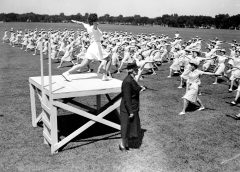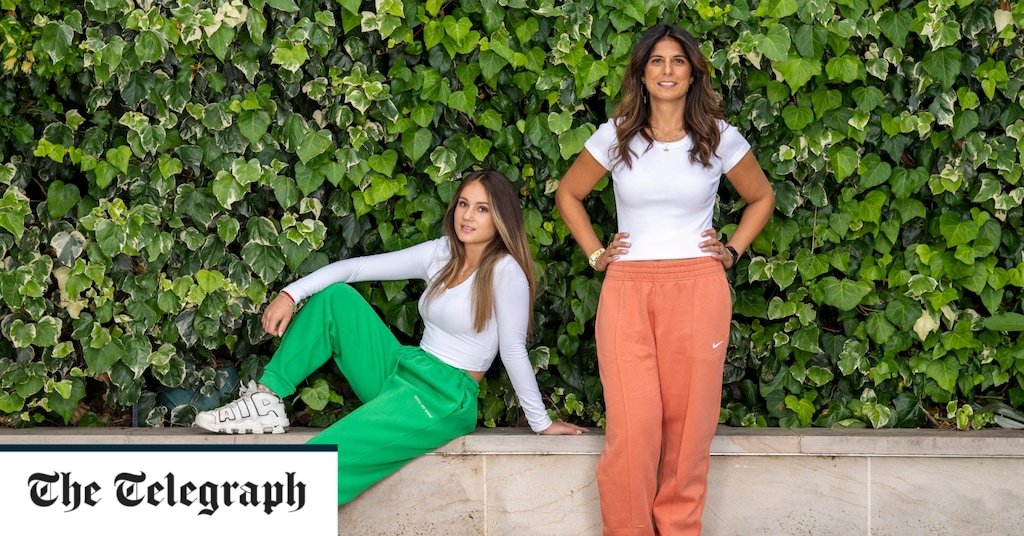
The military has long had ties with the fashion industry
[ad_1]
In the development of the ATB, the military collaborated with professional fashion designers and sought input from female soldiers to refine the design. According to Ashley Cushon, clothing designer and project lead for the ATB, feeling good in one’s clothes influences not only the individual’s mental health but also “overall readiness and performance levels, allowing them to focus on their mission.”
The move to create the ATB, along with other changes to the dress code implemented last year, is being touted as part of an increased effort by the military to enhance inclusivity and adapt to the growing diversity of its personnel and the varied needs of its soldiers. This development suggests that the military, a traditionally conservative and masculine institution, has at last adopted a more enlightened perspective on the needs of women.
But, in fact, the creation of the ATB is actually the latest chapter in a long entanglement between the fashion industry and the military — one spurred by the Army’s attention to its soldiers’ appearance, especially its female soldiers.
During the American Civil War, the demand for hundreds of thousands of standardized uniforms catalyzed the ready-made garment industry and led to a revolution in menswear after the war. World War I men’s uniform styles brought new trends to women’s fashion and changed the silhouette by 1916, which in turn also shaped the style of nurse uniforms — the first women’s uniforms the military issued.
During World War II, as part of a national mobilization effort, the War Production Board issued the L-85 order that restricted the civilian use of fabrics, clothing and accessories to preserve materials for military use. Fashion designers, following the order, found creative ways to work around it, such as using zippers instead of buttons, or introducing the now popular trend of flats modeled after ballet shoes, which were not rationed.
World War II also made urgent the question of women’s uniforms and appropriate appearance for female soldiers. For the first time in history, a significant number of women enlisted in the military’s ranks, serving primarily in the Women’s Army Auxiliary Corps (WAAC) and the Women Accepted for Volunteer Emergency Service (WAVES). These women needed uniforms that would suit their bodies while also allowing them to perform their duties comfortably.
At first the Office of the Quartermaster General (OQMG), which oversaw the development of women’s uniforms, simply made a few adjustments to male uniforms, believing that would suffice. It didn’t.
After a year of blunders and failing to deliver satisfying results for military women (almost 70 percent of the uniforms needed to be altered), the OQMG decided to recruit Dorothy Shaver — then the vice president of department store Lord & Taylor — to serve as a consultant. Shaver brought more than her expertise about women’s clothing and manufacturing. She also offered a feminist approach to uniform design, insisting that women’s military clothing should not imitate men’s uniforms but instead should be inspired by civilian sportswear and the “American Look” that highlighted practicality and independence.
Shaver’s perspective was most evident in her wrap dress design for the Army Nurse Corps, a garment that could be adjusted to the individual figure for accurate sizing with minimal alterations. She also persuaded military officials to include slacks as part of the official women’s wardrobe. Beginning in 1942, the military supplied pants for women working in motor transport and pilot service units, and by 1944, slacks were a staple among all WAAC units.
Known as a big proponent of American fashion, Shaver enlisted the best haute couture designers in the U.S., such as Philip Mangone, Mollie Parnis and Mainbocher, to create military uniforms. Their coveted designs became a useful recruiting tool, as every woman who joined the military knew they’d get a designer outfit. Indeed, Mainbocher’s WAVES uniforms became so popular that civilian women tried to copy them, prompting the U.S. Navy to issue warnings and remind the public that “unthinking persons who appropriate the distinctive designs of any uniform of the armed forces are violating Federal law.”
While military uniform designers in the 1940s considered functionality, they also sought to make outfits that looked pretty, addressing the government’s efforts to convince both the military command and the public that service in the armed forces would not make women more masculine. To this end, the Army discouraged women in the WAAC from sporting their hair “too short” or adopting appearances that registered as “butch,” instead requiring minimum hair lengths and the application of makeup. Relatedly, the L-85 regulations did not cover red lipstick, nor did the government ration it — despite lipstick containing some materials that were needed for military purposes. As with hair and makeup, designers and military commanders believed that a thoughtfully designed uniform might allow women to look and feel feminine while also providing enough comfort to help them do their jobs well.
The fashion industry also gained from its collaboration with the armed forces. As the military labored to streamline the production of uniforms, it launched a program to measure and standardize sizes, which benefited ready-made manufacturing for years to come. Couture designers also took inspiration from the military styles and turned out their own versions of uniforms for the runway, transforming the styles of women soldiers and war workers into a beauty ideal. In 1944, for example, Harper’s Bazaar featured a Clare Potter’s velveteen overall “cut precisely like a mechanic’s suit,” as the chic choice for fashion-savvy women.
As women became a permanent part of the military during the Cold War, initially as part of the Women’s Army Corps (WAC), the military maintained its emphasis on creating comfortable, practical uniforms that also enabled members of the WAC to maintain a beautiful and feminine look. Yet when the WAC was disbanded in 1978 and women became integrated into men’s units and later into combat roles, the focus became less on femininity and more on efficiency. In the process, the military placed women soldiers’ particular needs on the back burner.
If it took longer for the military to understand that bras are also part of soldiers’ tactical gear, the recent ATB design efforts show that it received the memo. Much like the uniforms of the 1940s, it is the civilian market that is providing both the knowledge and the inspiration for the ATB. Like the original sports bra, itself touted as a feminist clothing item in the 1970s, the military today is using fashion to boost its image and appeal to recruits.
It might take time before we’ll see commercial takes on the ATB in stores, but as the long history of the military’s involvement in our fashion trends shows, this day is probably not so far away.
[ad_2]
Source link


